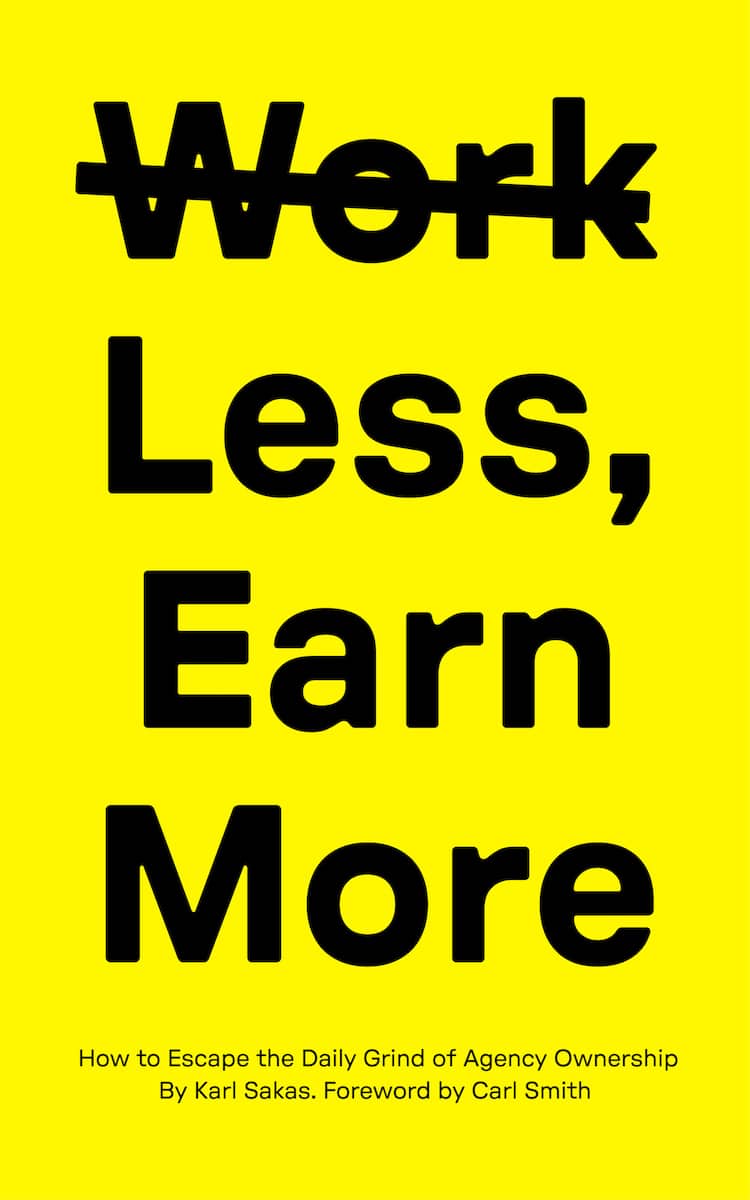Frustrated—or dumbfounded—by some of your employees’ choices? Assuming they’re competent at their jobs, the problem might stem from a fundamental mismatch—what I call the Owner vs. Employee mindset gap.
What do I mean? You and they approach things differently, using different Values, Goals, and Resources. Employees often choose instant gratification, while owners often choose delayed gratification. It’s a problem at many agencies, because the difference is seemingly invisible—you don’t notice ’til it’s too late.
Here in Part 1, I share why this is important, how the problem happens, and an example from when I was an employee. In Part 2, I share five examples to help you recognize the problem at your agency. Finally in Part 3, I share nine ways to fix the problem.
Why this is important for your agency
Once you understand the Owner vs. Employee mindset gap, you can make better decisions and get better results at your agency. Accepting that the gap is a fundamental, structural business challenge—rather than something you should take personally—will make you feel less frustrated, too.
Fortunately, you already know how to solve the problem! You can create incentives to encourage employees to act more like an owner. (That’s part of why you say you want employees to “take more initiative” or “take ownership” at work.) You can also structure your recruiting process to hire employees who have an innate Owner mindset.
Let’s explore the definition, an example, and caveats to consider.
Definition: What is the Owner vs. Employee mindset gap?
The Owner vs. Employee mindset gap is a fundamental difference between how owners vs. employees make decisions.
That is, employees tend to make decisions that create short-term benefits for them personally—in part, because they tend to get paid regardless of the result. Owners tend to make decisions that create long-term benefits for the business, because they are ultimately paid for performance.
The problem is that employees’ short-term gains may create long-term losses for the business. Owners know the benefits of delayed gratification, but for employees, it’s often an attitude of “I deserve it now” vs “it’ll pay off in the end.”
Personal example: Public transit vs. the $150 car service
After college, I lived in New Jersey and worked in Manhattan at a 35-person financial services firm. The commute was an hour and 10 minutes each way—and it involved two trains, two subway lines, and a walk at each end.
Employees sometimes needed to work late. Everyone was salaried, so there was no overtime. As a perk, the company would buy your dinner if you worked past 7pm, and the company would pay for a car service to take you home if you worked past 10pm.
Notably, the car service was door-to-door in 30 minutes, instead of 70 minutes (or more, if I missed the hourly train). Traveling 10 miles to my house, the car service charged $150—billed directly to the company’s account. I’d turn in a voucher the next day, and that was that.
I knew the point was for people to get home smoothly—but regularly scheduled commuter trains ran hourly ’til nearly 1am, and I could easily read on the train but not in the speeding Lincoln Town Car.
Based on that, I sometimes skipped the car service when I worked past 10pm on things like RFPs and quarterly client reporting. I knew if I left at a certain time, I’d make the next train, be home in 70 minutes, and save the company $150.
Was it foolish of me to put the company first? Not necessarily—it helped me get promoted, including an opportunity to help build a new department from scratch.
An employee with a more traditional employee mindset would have thought, “I deserve the car service” and taken it every time. Yet that $150 adds up.
I’ve made similar choices elsewhere when I’ve been a non-owner in the past. But that’s not the norm for all employees.
Caveats: It’s a continuum… and employees can choose to act like owners
The Owner vs. Employee mindset gap is a continuum, rather than a black and white dichotomy.
For instance, most employees aren’t going to sell their agency laptop for cash—because it’s legally and ethically wrong. But employees might pad their expense report, or “comp” clients free work (without permission) instead of having a difficult conversation.
Why do they do it? Because the employee personally benefits from those choices, and they likely won’t get caught. In fact, such “employee mindset” choices may have become a [potentially toxic] part of your employees’ culture.
Exceptions for Employees—and Owners
There are also exceptions. Many employees do adopt a version of an owner mindset—acting like owners, even if they don’t have equity—like my weighing whether to take the late-night car service home. (These tend to be your “New Rope” employees.)
And it goes both ways—some agency owners never escape the employee mindset from earlier in their career. This is especially true when you give equity to a long-time employee, without their having to buy-into the business. Your business partner’s outdated “think like an employee” mindset makes it harder for you to run the business, because they aren’t acting like a co-owner.
Next: 5 examples, and 9 ways to fix this
In my next two articles, I share five examples to help you recognize the problem and nine solutions to fix the problem at your agency.
Be sure to subscribe to my weekly newsletter to hear about future tips!
Question: How is the Owner vs. Employee mindset gap hurting your agency?
![[Part 1 of 3] Why your agency’s employees don’t think like an owner [Part 1 of 3] Why your agency's employees don't think like an owner](https://sakasandcompany.com/wp-content/uploads/2018/07/Part-1-of-3-Why-your-agencys-employees-dont-think-like-an-owner.png)

